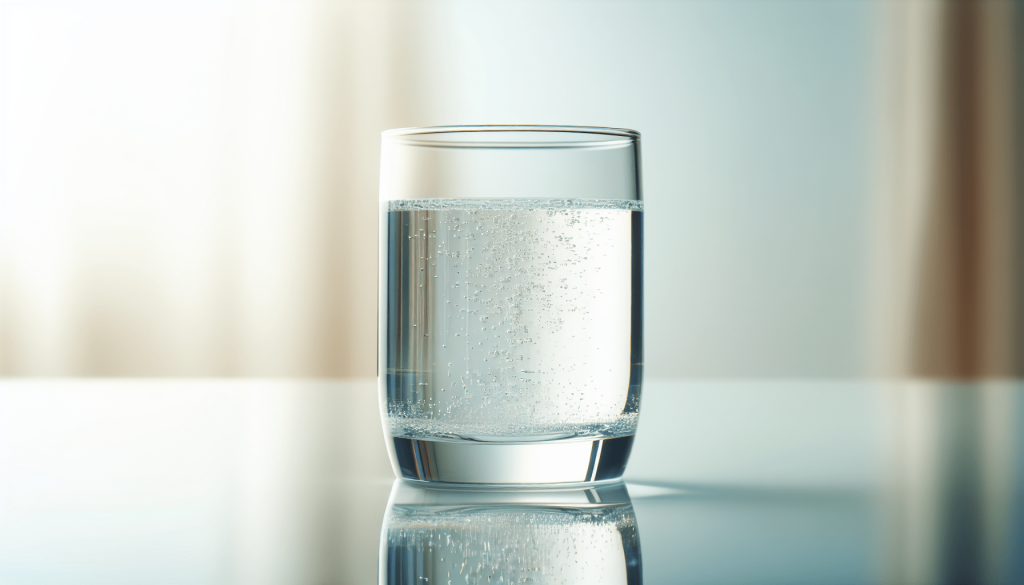When it comes to choosing a filter for your drinking water, it’s important to consider the options that best suit your needs. Clean and pure water is essential for maintaining good health, so finding the right filter can make a significant difference in the quality of the water you consume. With a wide array of choices available in the market, ranging from activated carbon filters to reverse osmosis systems, it’s crucial to understand the different filter types and their effectiveness in removing contaminants. By selecting the right filter for your specific requirements, you can ensure that every sip of water you take is refreshing and safe.
Types of Water Filters
When it comes to choosing a water filter for your drinking water, there are various options available, each with its own unique capabilities. Understanding the different types of water filters can help you make an informed decision about which one is best suited for your needs. In this article, we will explore four common types of water filters: activated carbon filters, reverse osmosis filters, ceramic filters, and UV filters.
Activated Carbon Filters
How they work
Activated carbon filters, also known as carbon filters or charcoal filters, are highly effective at removing a wide range of impurities from water. These filters consist of granules or blocks of activated carbon, which are made by heating organic materials, such as coconut shells or coal, at high temperatures. The activated carbon has a large surface area with tiny pores that can trap and absorb contaminants.
Water passes through the activated carbon filter, and as it does, the impurities become attached to the carbon. Common contaminants that activated carbon filters can remove include chlorine, volatile organic compounds (VOCs), herbicides, and some heavy metals.
Advantages
One of the major advantages of activated carbon filters is their ability to improve the taste and odor of water. The activated carbon can remove unpleasant smells and flavors caused by chlorine or organic compounds.
These filters are also relatively affordable and easy to install, making them a popular choice for many households. Additionally, they don’t require electricity or a constant water pressure to operate.
Disadvantages
One of the limitations of activated carbon filters is that they are not as effective against certain contaminants, such as dissolved solids, nitrates, or bacteria. If you have specific concerns about these impurities in your water, you may need to consider alternative filtration methods.
It’s also important to note that the effectiveness of activated carbon filters diminishes over time as the carbon becomes saturated with impurities. Regular filter replacement is necessary to maintain optimal performance.

Reverse Osmosis Filters
How they work
Reverse osmosis (RO) filters use a semi-permeable membrane to remove impurities from water. This filtration process involves forcing water through the membrane, which has extremely small pores that can trap contaminants, including dissolved solids, heavy metals, and certain bacteria and viruses.
The reverse osmosis system typically consists of a sediment pre-filter to remove larger particles, a carbon filter to remove chlorine and other organic compounds, and the RO membrane itself for the final purification.
Advantages
Reverse osmosis filters are highly effective at removing a wide range of impurities from water, making them a popular choice for those who want comprehensive filtration. They can remove up to 99% of contaminants, including lead, mercury, and pesticides.
RO filters can significantly improve the taste and quality of water, producing clear and refreshing drinking water. They are also capable of removing salts and minerals that may contribute to hardness or cause scaling in appliances.
Disadvantages
One drawback of reverse osmosis filters is their relatively slow flow rate. The process of forcing water through the membrane requires more time compared to other filter types. Additionally, the RO system may produce a considerable amount of wastewater during the filtration process.
RO filters also tend to be more expensive upfront compared to other filter types. The system requires regular filter replacement and maintenance to ensure efficient operation.
Ceramic Filters
How they work
Ceramic filters utilize a porous ceramic material to remove impurities from water. The ceramic is typically made from clay, which is fired at high temperatures to create a dense and robust filter medium. The tiny pores in the ceramic act as a barrier, trapping contaminants and allowing the clean water to pass through.
Some ceramic filters may also incorporate silver particles or an activated carbon core to enhance their filtration properties and inhibit bacterial growth.
Advantages
Ceramic filters are effective at removing bacteria, cysts, sediment, and larger particles from water. They provide a reliable barrier against common waterborne pathogens, making them suitable for areas where microbial contamination is a concern.
These filters are generally affordable, easy to clean, and have a long lifespan. They do not require electricity or chemical additives to operate effectively.
Disadvantages
While ceramic filters are capable of removing larger particles and bacteria, they may not be as effective against dissolved solids, chemicals, or viruses. Additionally, these filters may require regular cleaning to prevent clogging and maintain optimal performance.

UV Filters
How they work
UV filters, also known as ultraviolet sterilizers, disinfect water by using ultraviolet light to inactivate or destroy harmful microorganisms. These filters typically consist of a UV lamp, a quartz sleeve, and a chamber through which water flows.
As water passes through the filter, it is exposed to the UV light, which disrupts the DNA of bacteria, viruses, and parasites, preventing them from reproducing and rendering them harmless.
Advantages
One of the key advantages of UV filters is their ability to effectively eliminate bacteria, viruses, and other pathogens without adding any chemicals or altering the taste of the water. UV filtration is a non-chemical method of disinfection, making it a safe and environmentally-friendly choice.
UV filters are also relatively easy to maintain. Unlike other filter types, they do not require frequent replacement of filter cartridges. Instead, the UV lamps may need to be replaced after a certain period of time, typically around 9-12 months.
Disadvantages
While UV filters can effectively eliminate various microorganisms, they are not effective at removing other contaminants, such as heavy metals, chemicals, or dissolved solids. Therefore, combining a UV filter with another filtration method, like activated carbon or reverse osmosis, may be necessary to achieve comprehensive purification.
Furthermore, UV filters require a reliable source of electricity to operate. In the event of a power outage, the filtration process may be interrupted, potentially compromising the safety and quality of the water.
Factors to Consider When Choosing a Filter
When selecting a water filter, there are several factors to consider to ensure you choose the most suitable option for your needs.
Contaminant removal efficiency
Different filters are designed to target specific contaminants. Assess the impurities present in your water supply and choose a filter that can effectively remove those specific contaminants. For example, if you are concerned about chlorine taste and odor, an activated carbon filter would be a good choice. If you are primarily concerned about bacteria or viruses, a UV filter may be more appropriate.
Flow rate
Consider the flow rate of the filter, which refers to how quickly water can pass through the system. Depending on your household’s water needs, you may require a higher flow rate or a filter that can accommodate higher water demand.
Filter lifespan
Check the lifespan of the filter to determine how often you will need to replace it. Some filters may last for several months, while others may require replacement after a few weeks. Consider the replacement frequency and associated costs when selecting a filter.
Maintenance requirements
Consider the maintenance requirements of each filter type. Some filters may require regular cleaning to remove accumulated sediment or contaminants, while others may require more complex maintenance tasks. Choose a filter that aligns with your maintenance preferences and capabilities.

Contaminants Removed by Water Filters
Water filters can effectively remove a variety of contaminants, ensuring that your drinking water is clean, safe, and free from unwanted impurities. Here are some common contaminants that filters can remove:
Chlorine
Activated carbon filters, reverse osmosis filters, and UV filters can effectively remove chlorine, improving the taste and odor of the water.
Lead
Reverse osmosis filters, activated carbon filters, and ceramic filters can remove lead particles, protecting you from the potential health risks associated with lead exposure.
Mercury
Activated carbon filters and reverse osmosis filters can effectively remove mercury, which may be present in water sources due to industrial or environmental contamination.
Pesticides
Activated carbon filters and reverse osmosis filters can help remove pesticides and other organic compounds from water, ensuring that you consume cleaner and safer drinking water.
Bacteria
UV filters and ceramic filters are highly effective at removing various bacteria, including E. coli, Salmonella, and other harmful pathogens.
Viruses
UV filters are specifically designed to target and inactivate viruses, providing an additional layer of protection against waterborne viral infections.
Installation and Cost
When considering a water filter, it’s important to evaluate both the installation process and the overall cost associated with the filter.
Ease of installation
Some filters, such as activated carbon filters or ceramic filters, are relatively simple to install and can be done without professional assistance. On the other hand, reverse osmosis filters may require professional installation due to their complex system.
Upfront cost
Different filters have varying upfront costs. Activated carbon filters and ceramic filters are generally more affordable compared to reverse osmosis filters. UV filters fall somewhere in between, depending on the specific model and features.
Filter replacement cost
Consider the cost of replacing filter cartridges or other components. Some filters may require frequent filter replacement, which can add to the overall cost over time. Ensure that the replacement filters are readily available and reasonably priced.

Additional Features
Beyond the basic filtration functions, some water filters offer additional features or enhancements that can enhance the convenience or efficiency of the filtration process.
Filter indicator
Some filters are equipped with a filter replacement indicator, which helps you determine when it’s time to replace the filter. This feature eliminates the guesswork and ensures that your filter is always operating at its best.
Filter certifications
Look for filters that have been certified by independent testing organizations. Certifications, such as NSF or WQA, signify that the filter has been thoroughly tested and meets specific standards for contaminant removal.
Filter capacity
Consider the capacity of the filter, which refers to the volume of water the filter can effectively treat before requiring replacement. Understanding the filter capacity can help you determine if it meets your household’s water consumption needs.
Conclusion
Choosing the right water filter for your drinking water is essential for ensuring the quality, safety, and taste of the water you consume. By understanding the different types of water filters and considering factors such as contaminant removal efficiency, flow rate, filter lifespan, and maintenance requirements, you can make an informed decision about which filter is best suited for your needs. Whether you opt for an activated carbon filter, reverse osmosis filter, ceramic filter, or UV filter, investing in a reliable water filtration system will help you and your family enjoy cleaner and healthier drinking water.



